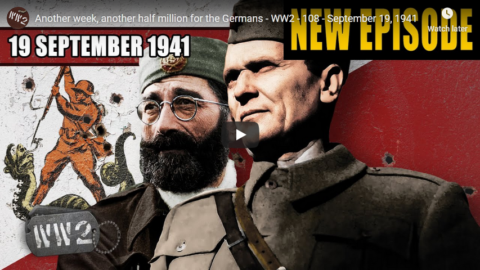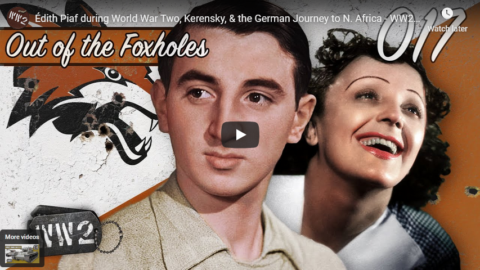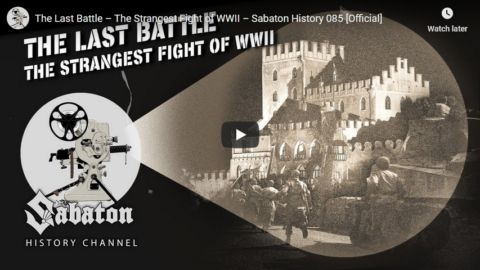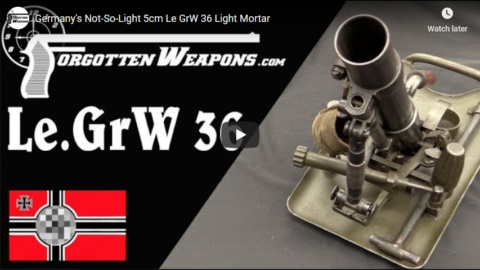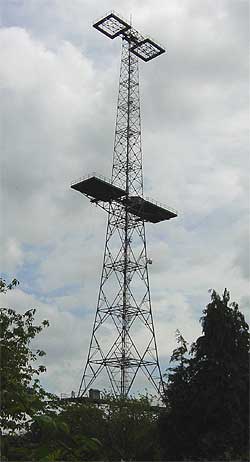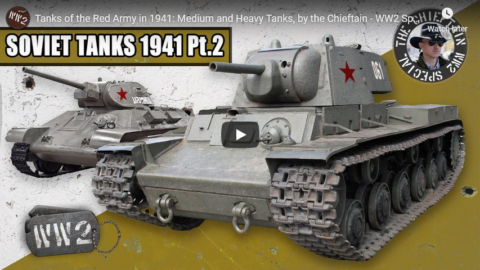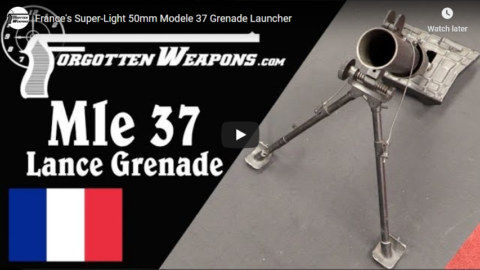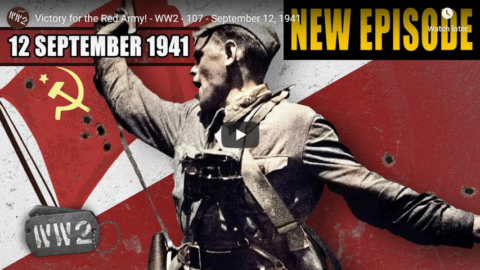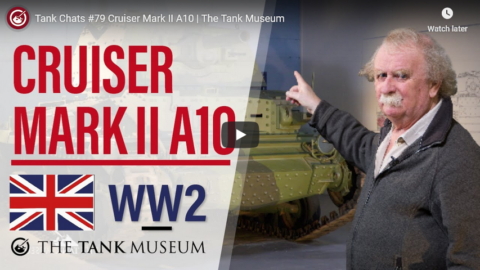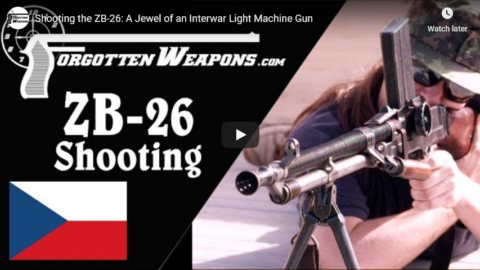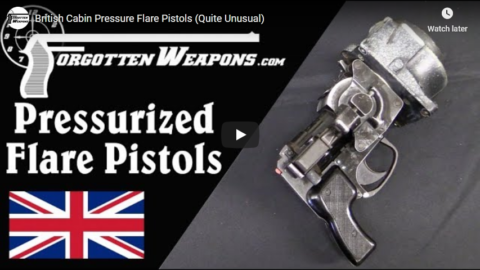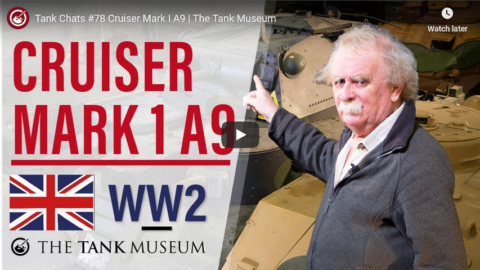Forgotten Weapons
Published 16 Dec 2017http://www.patreon.com/ForgottenWeapons
Cool Forgotten Weapons merch! http://shop.bbtv.com/collections/forg…
The Soviet PPSh-41 submachine gun is most distinctive for its very high rate of fire — approximately 1250 rounds/minute — and large drum magazine. What may come as a surprise to those who have not tried it is how this very high rate of fire does not actually make the weapon difficult to control or hold on target. In fact, the PPSh-41 is an easier SMG to shoot effectively than the later PPS-43, at least in my opinion.
The Soviets and the Germans made quite different choices in magazines and rate of fire with the PPSh and the MP40, but both turned out to be very good submachine guns. The glaring weak point of the PPSh are its magazines, and the difficulty in finding a drum that would run reliably in this particular example is why today’s shooting session is done with one of the 35-round stick magazines instead.
Thanks to Marstar for letting me examine and shoot their PPSh-41!
If you enjoy Forgotten Weapons, check out its sister channel, InRangeTV! http://www.youtube.com/InRangeTVShow
September 21, 2020
The Iconic “Burp Gun” – Shooting the PPSh-41
September 20, 2020
September 18, 2020
“The Last Battle” – The Strangest Fight of WWII – Sabaton History 085 [Official]
Sabaton History
Published 17 Sep 2020On the 5th of May 1945, the Second World War in Europe is literally in its final days. As the German lines and Nazi state collapse into free fall, some Nazi hardliners remain fighting until the very moment surrender is announced. At Castle Itter, the lines are blurred as US and German soldiers fight side by side in a medieval castle, home to some of the highest profile prisoners of the war.
Support Sabaton History on Patreon: https://www.patreon.com/sabatonhistory
Listen to “The Last Battle” on the album The Last Stand:
https://music.sabaton.net/TheLastStandWatch the Official Lyric Video of “The Last Battle” here:
https://www.youtube.com/watch?v=BwfJs…Listen to Sabaton on Spotify: http://smarturl.it/SabatonSpotify
Official Sabaton Merchandise Shop: http://bit.ly/SabatonOfficialShopHosted by: Indy Neidell
Written by: Markus Linke and Indy Neidell
Directed by: Astrid Deinhard and Wieke Kapteijns
Produced by: Pär Sundström, Astrid Deinhard and Spartacus Olsson
Creative Producer: Maria Kyhle
Executive Producers: Pär Sundström, Joakim Brodén, Tomas Sunmo, Indy Neidell, Astrid Deinhard, and Spartacus Olsson
Community Manager: Maria Kyhle
Post-Production Director: Wieke Kapteijns
Editor: Iryna Dulka
Sound Editor: Marek Kaminski
Maps by: Eastory – https://www.youtube.com/c/eastory
Archive: Reuters/Screenocean – https://www.screenocean.com
Sources:
– Photos of the Itter Castle: Sammlung Risch-Lau, Vorarlberger Landesbibliothek
All music by: SabatonAn OnLion Entertainment GmbH and Raging Beaver Publishing AB co-Production.
© Raging Beaver Publishing AB, 2019 – all rights reserved.
Germany’s Not-So-Light 5cm LeGrW 36 Light Mortar
Forgotten Weapons
Published 2 Sep 2018Sold for $18,400
http://www.patreon.com/ForgottenWeapons
Cool Forgotten Weapons merch! http://shop.bbtv.com/collections/forg…
The 5cm 5CM Leichter Granatwerfer 36 was the standard German light infantry mortar going into World War Two. It was designed by Rheinmetall-Borsig in the mid 1930s and adopted in 1936. It fired a 0.9kg / 2 pound mortar bomb with a range of up to 550 meters. In theory, it occupied the same role as the French Mle 1937 50mm light mortar — except it was far heavier than was practical, and substantially more complex to use. The LeGrW 36 weighed in at a hefty 31 pounds (14kg) – nearly four times as much as its French counterpart.
It was a striker fired design, with a trigger lever and thus did not fire immediately upon a round being loaded. It used adjustments in angle to determine range, with a constant projectile velocity (as opposed to venting a varying amount of propellent gas to adjust range). By the middle of the war, it was being pulled out of front-line use, as its weight and relative complexity made it impractical for its intended role.
If you enjoy Forgotten Weapons, check out its sister channel, InRangeTV! http://www.youtube.com/InRangeTVShow
September 17, 2020
Britain’s technological edge in the Battle of Britain
Over at The Register, Gareth Corfield lists some of the advanced technological kit the Royal Air Force had access to during the Battle of Britain in 1940:
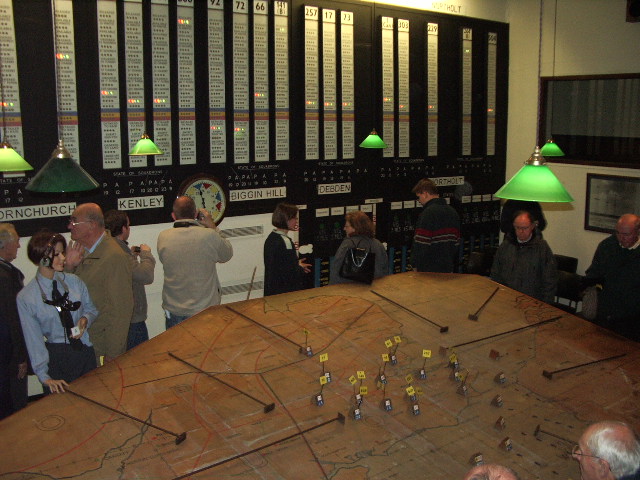
Restored Battle of Britain operations room in an underground bunker at former RAF station Uxbridge.
Photo by Ian Mansfield via Wikimedia Commons.
Technology played its part, mostly behind the scenes – yes, we mean the backroom boffins – in equipping Britain to hold firm and defeat the Germans. As today’s commemorations focus on the pilots and ground crew who saw off the Luftwaffe, spare a thought for the technologists whose efforts also saved the western world.
Radar and radio
Chief among the technological innovations that gave the RAF the edge was radar. In the 1930s Britain was one of the world leaders in radar (thanks in part to a bizarre and unsuccessful experiment to kill sheep with a death ray) leading to the building of radar stations all around the British coast.
Sir Robert Watson-Watt, today regarded as the father of radar, was instrumental in devising a method of bouncing radio waves off a flying aeroplane to figure out its location. He turned that 1935 concept into the fully operational Chain Home and Chain Home Low air defence networks inside four years.
Without radar, the RAF was totally reliant on humans with binoculars spotting incoming formations of German bombers; radar gave the air force an early warning capability as hostile aircraft formed up over France before crossing the Channel.
Before radar came radio direction-finding. The RAF’s Home Defence Units were first established in the 1920s and mastered the art of pinpointing an aeroplane’s location from radio transmissions made by its pilots. Though less high profile than radar, the HDUs’ activities allowed the RAF to “see” beyond the range of radar as Luftwaffe bomber formations, transmitting to each other over France, formed up ready for a raid over British soil.
Signals intelligence and compsci
Not far behind radar was the crucial role of what was then the Government Communications and Cipher School (GC&CS), based at Bletchley Park. Today the site is home to the National Museum of Computing but in the dark days of the 1940s it was where codebreakers deciphered German military communications.
Breaking Nazi Germany’s encryption was a vast task, and in the days before computers extremely labour intensive; between 9,000 and 12,000 personnel worked at Bletchley during the Second World War. The demands of RAF and other military commanders for speedy decryption of enemy messages directly contributed to the development of early computer science; Alan Turing worked at Bletchley Park, helping devise improvements to electromechanical crypto-breaking machines that resulted in the Bombe, a very early computer.
September 16, 2020
September 15, 2020
France’s Super-Light 50mm Modele 37 Grenade Launcher
Forgotten Weapons
Published 1 Sep 2018Sold for $1,725
http://www.patreon.com/ForgottenWeapons
Cool Forgotten Weapons merch! http://shop.bbtv.com/collections/forg…
A new very light and portable mortar to replace the V-B rifle grenade was one of the facets of the French plan for rearmament and modernization after World War I. The concept for the weapons that would become the L.Gr. Mle 37 was first requested in 1924 — but like so almost all the other parts of that arms program, it was crippled by delays through the 1920s and 1930s. Only in the late 1930s when war was looking imminent did the program finally move forward.
The design, created by Captain Nahan of the Chatellerault arsenal, was adopted in 1937 and a whopping 21,950 were ordered in January of 1938 — and the order was quickly revised up to 50,000. However, only 2900 had been produced by the time of the armistice in June 1940. Production resumed in 1944, and the launcher did see use in Indochina. In addition, its 50mm grenade was the basis for the postwar French rifle grenades, as used on the MAS-36 LG 48, the MAS-44, and MAS-49 rifles. As fired from the mortar, the projectile weighed about one pound (0.4kg) and had a range of 80 to 460 meters, with an effective rate of fire up to 20 rounds per minute.
If you enjoy Forgotten Weapons, check out its sister channel, InRangeTV! http://www.youtube.com/InRangeTVShow
September 13, 2020
Tank Chats #79 Cruiser Mark II A10 | The Tank Museum
The Tank Museum
Published 29 Jun 2019The Cruiser Mark II A10 was developed alongside the A9 and was intended to be a heavier version of the tank.
Support the work of The Tank Museum on Patreon: ► https://www.patreon.com/tankmuseum
Visit The Tank Museum SHOP: ► https://tankmuseumshop.org/
Twitter: ► https://twitter.com/TankMuseum
Instagram: ► https://www.instagram.com/tankmuseum/
Tiger Tank Blog: ► http://blog.tiger-tank.com/
Tank 100 First World War Centenary Blog: ► http://tank100.com/ #tankmuseum #tanks
September 12, 2020
Shooting the ZB-26: A Jewel of an Interwar Light Machine Gun
Forgotten Weapons
Published 27 Oct 2017Sold for $34,500 (transferrable).
Today we have a chance to do some shooting with a ZB-26, a German-occupation 8mm light machine gun made at Brno in Czechoslovakia. The ZB-26 does not get nearly as much attention as LMGs made by the better known powers during the war, but it is an excellent weapon. In addition to being adopted by the Czech military, the gun was sold to about two dozen other countries and used in significant numbers by the Waffen SS.
As one would expect form its reputation, the ZB was smooth, reliable, and very controllable. For all the reasons discussed in yesterday’s history and disassembly video [here], it is a top notch firearm.
http://www.patreon.com/ForgottenWeapons
Cool Forgotten Weapons merch! http://shop.bbtv.com/collections/forg…
If you enjoy Forgotten Weapons, check out its sister channel, InRangeTV! http://www.youtube.com/InRangeTVShow
September 9, 2020
Tanks of the Red Army in 1941: Armoured Cars and Light Tanks, by the Chieftain – WW2 Special
World War Two
Published 8 Sep 2020Chieftain is back on the World War Two channel with a deep-dive into the Soviet armour in the first months of war on the Eastern Front. Remember that this is only Part 1 and covers armoured cars and light tanks. Part 2 comes out next week and focuses on medium and heavy tanks.
Join us on Patreon: https://www.patreon.com/TimeGhostHistory
Or join The TimeGhost Army directly at: https://timeghost.tvFollow WW2 day by day on Instagram @ww2_day_by_day – https://www.instagram.com/ww2_day_by_day
Between 2 Wars: https://www.youtube.com/playlist?list…
Source list: http://bit.ly/WW2sourcesWritten and Hosted by: The Chieftain https://www.youtube.com/user/TheChief…
Director: Astrid Deinhard
Producers: Astrid Deinhard and Spartacus Olsson
Executive Producers: Astrid Deinhard, Indy Neidell, Spartacus Olsson, Bodo Rittenauer
Creative Producer: Joram Appel
Post-Production Director: Wieke Kapteijns
Research by: The Chieftain
Edited by: Miki Cackowski
Sound design: Marek Kamiński
Map animations: Eastory (https://www.youtube.com/c/eastory)Sources:
Bundesarchiv
Narodowe Archiwum Cyfrowe
waralbum.ru
From the Noun Project: Shield by Nikita Kozin, Game by Ecem Afacan, Weight by Vadim Solomakhin, oil barrel by BomSymbols, Radio by Pravin UnagarSoundtracks from the Epidemic Sound:
Hakan Eriksson – “Epic Adventure Theme 3”
Reynard Seidel – “Deflection”
Johannes Bornlof – “Deviation In Time”
Johannes Bornlof – “The Inspector 4”
Max Anson – “Ancient Saga”
Bonnie Grace – “Imperious”
Rannar Sillard – “March Of The Brave 4”
Phoenix Tail – “At the Front”Archive by Screenocean/Reuters https://www.screenocean.com.
A TimeGhost chronological documentary produced by OnLion Entertainment GmbH.
September 8, 2020
British Cabin Pressure Flare Pistols (Quite Unusual)
Forgotten Weapons
Published 8 Oct 2018https://www.forgottenweapons.com/brit…
http://www.patreon.com/ForgottenWeapons
Cool Forgotten Weapons merch! http://shop.bbtv.com/collections/forg…
Signal flares were an important communications tool for aircraft during World War Two, and a multitude of flare pistol types exist with mounting brackets for aerial use. The introduction of pressurized fuselages made this a much more difficult proposition, however. These two flare pistols were designed by the British to maintain the pressurized seal of an aircraft body while still allowing firing and reloading through a pivoting mount and system of seals. I bet you haven’t seen something quite like these before!
Contact:
Forgotten Weapons
PO Box 87647
Tucson, AZ 85754If you enjoy Forgotten Weapons, check out its sister channel, InRangeTV! http://www.youtube.com/InRangeTVShow
September 6, 2020
Tank Chats #78 Cruiser Mark I A9 | The Tank Museum
The Tank Museum
Published 21 Jun 2019The Tank Cruiser Mark I A9 is an interwar British tank. Tank Historian David Fletcher talks through the very first cruiser tank to go into service.
Support the work of The Tank Museum on Patreon: ► https://www.patreon.com/tankmuseum
Visit The Tank Museum SHOP: ► https://tankmuseumshop.org/
Twitter: ► https://twitter.com/TankMuseum
Instagram: ► https://www.instagram.com/tankmuseum/
Tiger Tank Blog: ► http://blog.tiger-tank.com/
Tank 100 First World War Centenary Blog: ► http://tank100.com/ #tankmuseum #tanks #tankchats

